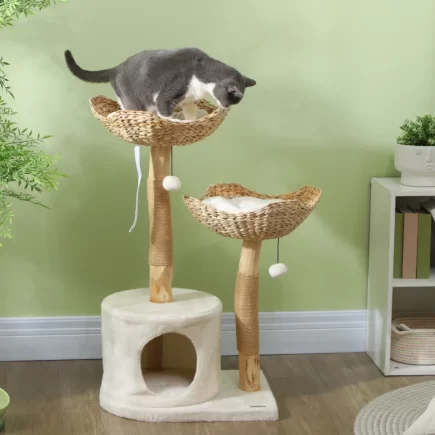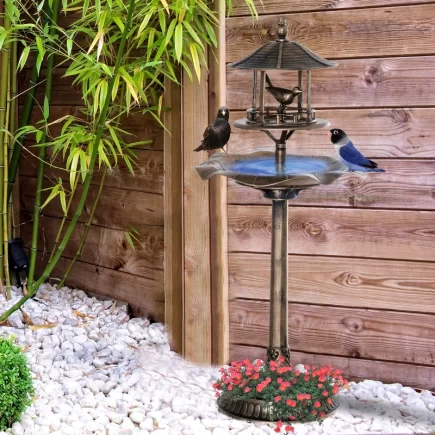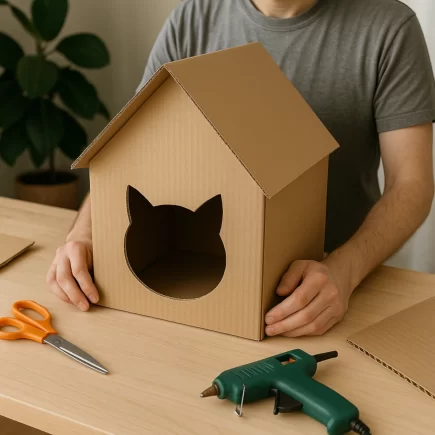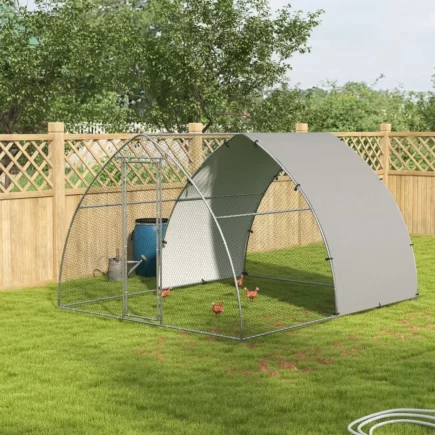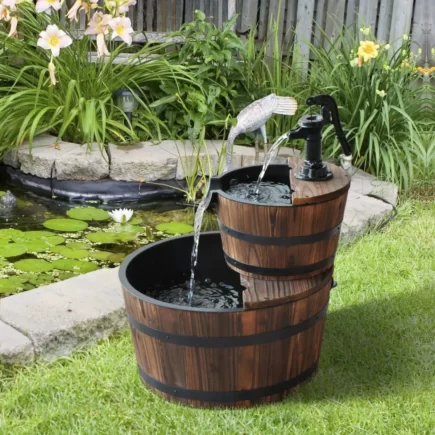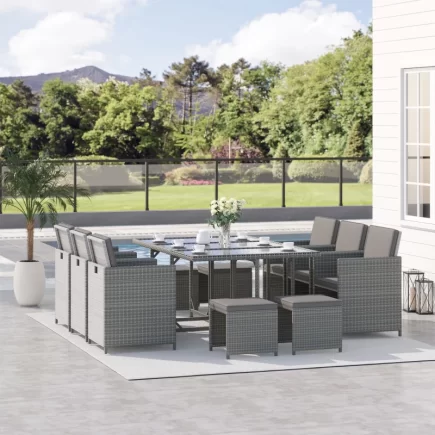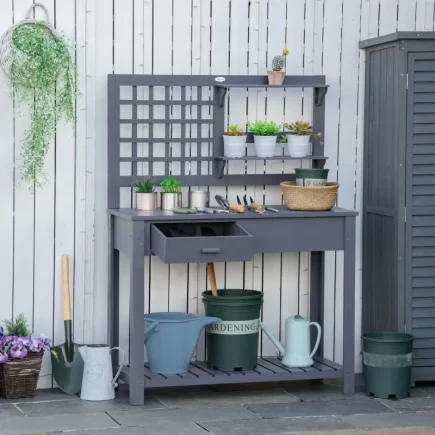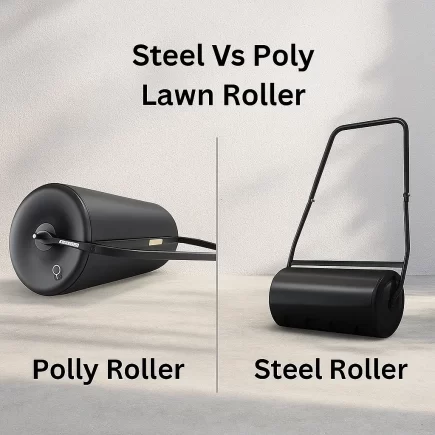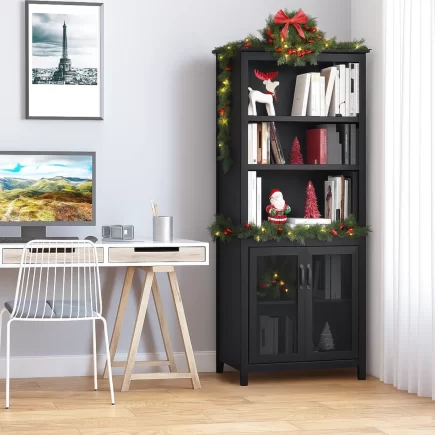A garden fountain can transform your outdoor space into a serene oasis, offering not only beauty but also a sense of calm. The gentle sound of flowing water is a natural stress reliever, helping to mask noise and create a peaceful atmosphere. Whether you want to enhance your patio, backyard, or garden, a well-placed fountain can bring harmony, visual appeal, and even curb appeal to your home.

Building your own garden fountain is an achievable DIY project that can save you money while allowing you to customize the design to fit your specific tastes. Let’s dive into the process of making your own garden fountain.
Material and Tool List
To get started on your DIY garden fountain, you’ll need a list of materials and tools. Below is an essential inventory that will ensure you have everything you need for a successful project.
Essential Materials for a Budget-Friendly Garden Fountain

| Material | Description |
| Container/Basin | A waterproof container like a large pot, tub, or basin to hold the water. Repurpose an old birdbath, pot, or tub for an eco-friendly option. |
| Pump | A submersible pump, either electric or solar-powered, to circulate the water. The size of the pump depends on the height and size of the fountain. |
| Flexible Tubing | Tubing to connect the pump to the fountain’s spout. The tubing should be long enough to reach from the pump to the top of the fountain. |
| Rocks or Stones | Decorative stones or pebbles to enhance the fountain’s look and keep the pump hidden. Consider using natural stones or even repurposed items. |
| Optional Nozzle | A nozzle or spout to direct the water flow in various patterns or heights. This is optional depending on your fountain design. |
| Sealant or Adhesive | Waterproof sealant to ensure the basin and connections are secure and leak-free. Silicone or waterproof adhesive works best. |
| Solar Panel (Optional) | For solar-powered fountains, a solar panel is needed to power the pump without electricity. Make sure it’s rated for outdoor use and weatherproof. |
Tools Required

| Tool | Description |
| Utility Scissors | To cut the tubing and make adjustments to materials as needed. |
| Drill/Driver | For drilling holes into containers or decorative materials, such as stones. Ensure the drill is suitable for stone or concrete. |
| Handsaw | To cut wood or other materials used for structural support. |
| Level | To make sure your fountain is level during installation. |
| Measuring Tape | For accurate measurements when cutting tubing or fitting parts together. |
| Bucket/Water Source | For filling your basin with water before testing the pump. |
| Gloves | For protection during construction, especially when handling sharp tools or heavy objects. |
With these materials and tools, you’re ready to start your garden fountain project.
Step-by-Step Instructions for Building a Garden Fountain
Building a garden fountain involves several crucial steps that ensure both functionality and aesthetic appeal. Follow this detailed guide to create a stunning water feature for your outdoor space.
Step 1: Choosing the Right Location for Your Fountain
The location of your garden fountain plays a significant role in both its visual impact and how well it functions. Here’s how to select the best spot:
- Visibility
The fountain should be placed in an area where it can be easily seen and appreciated from your main outdoor seating area. This could be a patio, garden bench, or even near a dining area. Consider how the fountain will enhance your view from these spots, as the gentle sound of flowing water can be calming and inviting. Aim to create a focal point for your garden where the fountain draws the eye and adds to the overall design.
- Access to Power
If your fountain uses an electric pump, it’s essential to position it close to an outdoor electrical outlet. Running extension cords can be dangerous and unsightly. For solar-powered pumps, ensure the location receives direct sunlight for several hours each day. This ensures the pump gets enough power to operate efficiently, especially on sunny days.
- Safety and Maintenance
Make sure the location you choose is easily accessible for future maintenance. You’ll need to clean the pump periodically and check the water levels, so avoid placing your fountain in hard-to-reach areas. Additionally, select a spot that won’t accumulate excessive debris, such as under a large tree where falling leaves could clog the pump or water source.
By carefully choosing the right location, you ensure that your fountain will serve as both a beautiful feature and a functional addition to your garden.
Step 2: Preparing the Site
After selecting the perfect location, it’s time to prepare the site for construction. The goal is to create a level, secure foundation for the fountain.
Clear the Area

Remove any rocks, sticks, or plants from the area where the fountain will sit. Clear the site of any debris or uneven surfaces that could interfere with your fountain setup. It’s also a good idea to remove any grass or roots to prevent them from disturbing the base of the fountain in the future.
Level the Ground
Using a shovel, make sure the ground is as level as possible. This is crucial because an uneven surface can cause the basin to tilt, potentially leading to water overflow or improper water circulation. A level surface also ensures that the water flows evenly through the fountain, which is vital for its proper operation.
Dig a Hole (if needed)
If you’re using a large container, such as a tub or basin, you might need to dig a hole to accommodate the size of the container. The hole should be slightly larger than the container itself to ensure the basin sits securely in place. The goal is to make sure the basin is flush with the surrounding ground level. A stable, flat base will prevent any future issues with water leakage or imbalance.
Step 3: Building the Base
With the site prepared, it’s time to lay the foundation for the fountain. The base is where the fountain’s components will rest, so it’s important to set it up properly.

Place the Basin
Once the hole is dug and cleared, place the waterproof basin in the prepared area. If you’re using a container that has a hole at the bottom, make sure to seal it properly. You can use waterproof sealant or silicone to prevent any water from leaking out of the container. This step is crucial to ensure that the water remains in the basin, where it should stay to be recirculated by the pump.
Add Gravel
Next, add a layer of drainage gravel to the bottom of the basin. The gravel ensures that water flows smoothly without getting clogged by debris. It also helps stabilize the pump by keeping it slightly elevated above the basin’s bottom. This is particularly important if you’re using a submersible pump. By creating a stable, clear path for water, the gravel will also prevent the pump from being submerged in dirt or algae, extending its lifespan.
Step 4: Installing the Pump
The pump is the heart of your fountain, circulating the water throughout the feature. Installing the pump properly is key to ensuring consistent water flow.
Submerge the Pump
Place the submersible pump inside the basin, making sure it’s fully submerged in water. Check that the pump sits securely at the bottom of the basin, with no chance of it tipping over. The pump should be placed in a position that allows it to pull water from the basin and push it through the tubing to the nozzle. If the pump isn’t sitting properly, it can lead to poor water circulation or even pump failure.
Connect the Pump to the Tubing
Next, attach the flexible tubing to the pump’s output. Use a tubing that’s long enough to reach from the pump’s location to the top of your fountain. Measure and cut the tubing as needed to ensure the water can flow freely through it. For a secure connection, use silicone adhesive or a hose clamp to keep the tubing in place. Ensuring a tight fit will prevent water from leaking and ensure smooth, consistent water flow.
Step 5: Connecting the Water Flow
Once the pump is set up and the tubing is in place, it’s time to connect the water flow system to complete the fountain’s functionality.

Attach the Nozzle (Optional)
If you’re using a nozzle or spout, now is the time to attach it to the top of the tubing. The nozzle helps direct the water flow into the desired pattern, whether you prefer a gentle trickle or a more forceful stream. Position the nozzle so that the water flows smoothly and evenly over the edge of the fountain. You can experiment with different nozzle types to achieve different water effects (e.g., a single stream, cascading water, or bubbling water).
Test the Pump
Once everything is connected, fill the basin with water and plug in the pump. Turn the pump on and observe the water flow. The water should circulate smoothly, and the nozzle should direct the water where you want it to go. If the water flow isn’t as strong as you’d like, check the pump’s settings and adjust the nozzle to increase the flow. Make sure that the tubing is properly secured and there are no kinks that could obstruct the water flow.
Eco-Friendly and Cost-Effective Fountain Ideas
Using Solar Power
Solar-powered fountains are a great eco-friendly option. They don’t require an electrical outlet and are energy-efficient. Solar fountains are perfect for areas with good sun exposure, helping you reduce energy costs.
Solar Fountain Pros:
- No electricity cost
- Environmentally friendly
- Low maintenance
Best Solar Fountain for Small Spaces: Solar-powered birdbath fountains are great for small gardens and patios. They are easy to install, cost-effective, and make a beautiful addition to any garden.
Repurposing Materials
Repurposing old items for your fountain is both affordable and environmentally friendly. You can use old flower pots, ceramic containers, or even an unused birdbath as the base for your fountain.
Example: Use a large ceramic bowl or a plastic storage bin as the water basin, and cover it with stones or pebbles to enhance its visual appeal.
Budget-Friendly Fountain Solutions
Building a garden fountain doesn’t have to break the bank. Here’s how to keep costs low:
- Use Low-Cost Materials: Opt for affordable materials such as plastic basins, recycled containers, or inexpensive pumps.
- DIY Customization: Create your own nozzle or decorative elements with items like stones, branches, or even old garden sculptures.
A simple fountain made with affordable materials can still look stunning and provide all the benefits of a more expensive option.
Aesthetic Customization for Your Fountain
A fountain should not only be functional but also fit seamlessly into your garden’s aesthetic. Here are some ways to customize your fountain:
- Add Decorative Elements: Use stones, pebbles, or sculptures to enhance the look of your fountain. These elements will also help to hide the pump and tubing.

- Use Plants: Surround your fountain with plants that thrive in moist conditions, such as ferns, water lilies, or hostas. The greenery will complement the flowing water and add color to your garden.
- Choose a Style: Match the fountain’s design with your garden’s overall theme, whether it’s rustic, modern, or classical. You can create a cohesive look by choosing materials and colors that blend well with your garden’s landscaping.
Enhancing Your Fountain with Lighting and Landscaping
Lighting can add a magical effect to your fountain, especially at night. Here are some ideas to enhance your fountain:
- Underwater LED Lights

Install waterproof LED lights in the basin or around the fountain to create a stunning visual effect after dark.
- Surrounding Landscaping
Add plants, rocks, or mulch around the fountain to make it blend in with the surrounding environment. This will help your fountain feel like a natural part of the landscape.
Lighting Tip: Solar-powered lights are a great eco-friendly option for illuminating your fountain.
Building your own garden fountain is a rewarding DIY project that can enhance the beauty and tranquility of your outdoor space. By following the steps outlined above, you can create a functional and aesthetic water feature that fits your style and budget. Whether you choose to incorporate solar energy, repurpose materials, or add unique decorative elements, a garden fountain is sure to add charm to your garden.
Ready to start building your fountain? Visit Aosom Garden Fountains to explore our range of products that will help you create the perfect water feature for your backyard.
FAQS
1.Can I build a fountain without electrical power?
Yes, you can build a fountain without electrical power by using a solar-powered pump. Solar fountains are a great option for eco-friendly and low-maintenance water features, especially in sunny areas where electrical outlets may not be easily accessible.
2.How can I add lighting to my garden fountain?
You can enhance your garden fountain by adding LED or solar-powered lights around the base or beneath the water. Submersible LED lights or placing solar lights near the fountain will highlight the water effect, creating a beautiful nighttime display.
3.What size pump do I need for my fountain?
The size of the pump depends on the height and volume of water you need to move. For most small DIY fountains, a pump with a flow rate of 250-500 gallons per hour (GPH) is sufficient. Ensure the pump can handle the vertical lift and size of your fountain.

